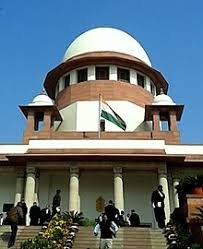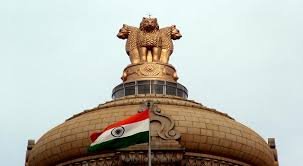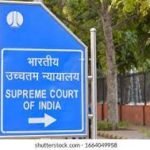This judgment from the Supreme Court of India concerns a long-standing property dispute that has seen multiple remands and appeals. The core issue revolves around conflicting survey numbers in property deeds despite consistent boundary descriptions, leading to ambiguity regarding the exact identification of the land.
Basic Facts
Initial Transfers (1955 & 1964):
◦On 8th February 1955, the appellant’s father executed a sale deed conveying “Verumpattom Rights” over 9 cents of land in Survey No. 1236.
On 13th February 1964, the appellant’s father executed a conveyance deed transferring “Jenmam Rights” over 9 cents of land in Survey No. 1250.
Crucially, both deeds, despite different survey numbers, described the same area (9 cents) and identical boundaries.
- Subsequent Developments (1993-2011):
In 1993, partition and settlement deeds devolved interest in the subject land upon the appellant.
On 22nd March 1994, the respondents’ father executed a settlement deed pertaining to the land from both the 1955 sale deed (Survey No. 1236) and the 1964 conveyance deed (Survey No. 1250), creating further ambiguity by referencing the conveyance deed but stating the property was included in Survey No. 1236.
In 2011, the respondents filed a suit (O.S. No. 246 of 2011) seeking declaration of title, boundary fixation, and injunction against the appellant.
- Trial Court and High Court Proceedings (2017-2024):
The Trial Court dismissed the suit on 31st October 2017.
The High Court, in an appeal (R.F.A. No. 42 of 2018), initially remanded the matter back to the Trial Court on 5th July 2021 for reconsideration of evidence and appointment of a Court Commissioner due to unclear identification of the subject land.
The appellant challenged this first remand via a special leave petition (SLP(C) No. 13602 of 2021).
Ultimately, the High Court, through its impugned judgment dated 9th January 2024, once again remanded the suit back to the Trial Court for de-novo disposal and to allow parties to adduce further evidence. This second remand is what the appellant challenged before the Supreme Court.
Law Involved :
- The primary legal context is a Civil Appeal before the Supreme Court of India.
- The procedural concept of remanding a case for de-novo disposal (meaning a new trial from the beginning) is central to the appeal.
- The case also involves the interpretation of various property deeds including sale deeds, conveyance deeds (specifically concerning “Verumpattom Rights” and “Jenmam Rights”), and settlement deeds.
- The role and necessity of a Court Commissioner for proper land identification and boundary fixation were also key issues.
Reasoning :
- The Supreme Court carefully considered the interpretation of the three key documents: the sale deed, the conveyance deed, and the settlement deed.
- It observed a significant discrepancy in survey numbers (1236 vs. 1250) between the 1955 sale deed and the 1964 conveyance deed. However, it noted that the area (9 cents) and the boundary descriptions were consistently the same across all relevant documents.
- The Court highlighted that the High Court’s Single Judge had correctly identified this discrepancy and the need for proper identification, noting that identification based on boundaries would “clinch the issue”. Therefore, the initial remission of the matter to the Trial Court for the appointment of a Court Commissioner to resolve this ambiguity was deemed justified. The matter had been pending for over 14 years without clarity.
- However, the Supreme Court found that the High Court erred in remitting the matter for de-novo disposal on the second occasion (the 9th January 2024 order). The Court reasoned that given the consistent boundary descriptions and the need to interpret the documents, the High Court itself should have decided the appeal on its merits after obtaining necessary clarifications, rather than sending it back for a full retrial. The prior direction for a Court Commissioner was deemed sufficient to resolve the factual ambiguity, allowing the High Court to proceed with a substantive decision.
Holding:
- The Supreme Court allowed the present appeal.
- It effectively set aside the impugned judgment and final order of the High Court dated 9th January 2024, which had mandated a de-novo disposal.
- The Court requested the learned Single Judge of the High Court to decide the original appeal (R.F.A. No. 42 of 2018) on its own merits, taking into account the Supreme Court’s observations.
- This decision is to be made expeditiously, ideally within a period of 6 months from the date of the judgment.
Peter Augustine V. K.V. Xavier And Others
Supreme Court: 2025 INSC 771: (DoJ 23-05-2025)








